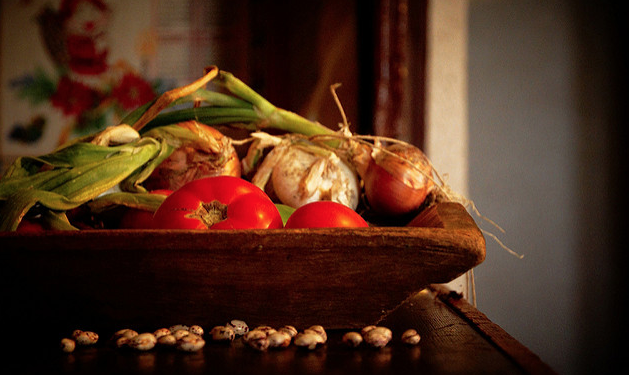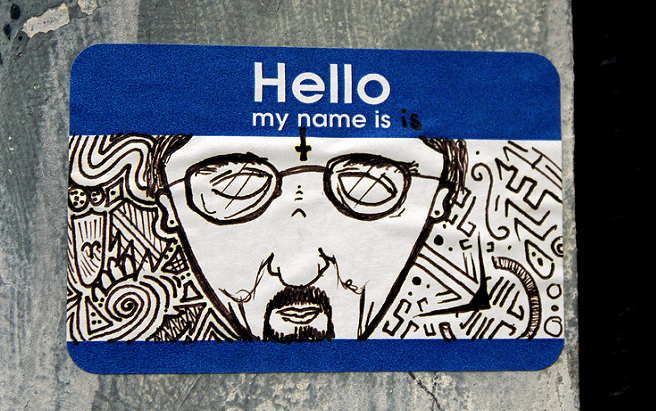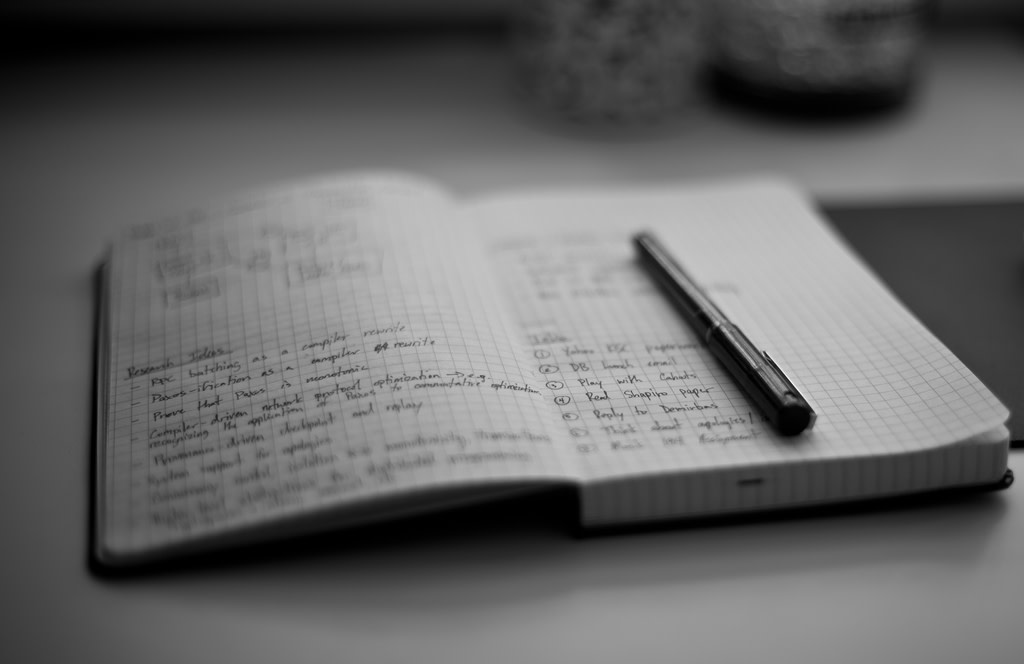You Can Have an Amazing Memory: Learn Life-changing Techniques and Tips From the Memory Maestro
I've ever been envious of people with infrequent memories. You know, the kind of people who amass encyclopedic knowledge with seemingly little effort, while the balance of us struggle to remember the proper noun of the person we were introduced to seconds ago.
At that place'south hope for all of united states of america, though. Merely as nosotros can strengthen whatsoever other muscle in our bodies, nosotros can train our brains to remember more and larn annihilation faster. Y'all don't need to be born with a photographic retentivity (and, in fact, with a few notable exceptions, virtually no adults actually take a photographic retention).
Whether yous need to written report for an exam, desire to learn a new language, hope to avoid embarrassing retentivity lapses (what's the proper noun of your manager's spouse again?), or simply want to stay mentally sharp, improving your memory is easier than it sounds. All it takes is trying out new memorization techniques or making primal adjustments in your lifestyle. Here are x of the best tips and tricks to help boost your memory for both the short and the long term.
-
The Science of Memory
-
Lifestyle Changes That Can Improve Your Memory
-
Mnemonics Help Yous Remember More
-
Everyday Memorization Techniques
The Scientific discipline of Memory
Offset, let's talk about how memory works, and so we can understand the science behind these memorization techniques.
Get productivity tips in your inbox
If memory--or how our brains brand and call back memories--seems mysterious to yous, you lot're non lone. Scientists and philosophers have been trying to figure out how man memory works for at least ii,000 years--and they're still making new discoveries. For example, in 2016, British scientists won the largest prize for neuroscience in the world (1 million Euros) for their piece of work on retentivity--the discovery of a poly peptide in the brain that plays a central part in memory formation and memory loss. There's nonetheless lots to discover and empathise.
Still, nosotros practise know that there are basically three stages or steps to retentivity processing: encoding, storage, and recall.
Encoding
The kickoff step to creating a memory is called encoding: It's when yous notice an issue or come across a piece of information and your encephalon consciously perceives the sounds, images, concrete feeling, or other sensory details involved.
Allow's take, for example, your showtime trip to Las Vegas. Your memory of that outcome is formed past your visual system (noticing extravagantly designed buildings and lush landscaping, for instance), your auditory organization (the ringing of the slot machines), and perhaps smell (the distinctive scents pumped into each casino).
Research suggests we remember things ameliorate and retain them longer when we associate meaning to them using semantic encoding
If you attach meaning or factual cognition to whatever of this sensory input, that's called semantic encoding. For example, if y'all acquaintance the Bellagio Resort and Casino in Vegas with its location on a map or the fact that the dancing fountain show takes identify every 30 minutes, you're encoding the Bellagio with semantic memory.
This is good to know because inquiry suggests nosotros remember things meliorate and retain them longer when nosotros associate meaning to them using semantic encoding.
Storage
All of these footling bits and pieces of information are so stored in different areas of your encephalon. Your neurons (the nerve cells in your brain) pass signals to each other about what you perceived, finer "talking" with each other and building either temporary or long-lasting connections. It's that neural activeness and the forcefulness of those connections that make a memory, neuroscientists believe.

At that place are two kinds of memory: brusque-term and long-term. Short-term or working memory is like your encephalon's scratchpad. Information technology's when your encephalon temporarily stores information earlier either dismissing information technology or transferring information technology to long-term memory—for case, remembering what you want to club for luncheon before calling the takeout place. Once your food is delivered and eaten, your brain can let go of that info. Long-term memories are those memories you concur on to for a few days or many years--things like how to ride a bike or the kickoff dinner you lot had with the first person you fell in love with.
Both kinds of memories can weaken with age because the brain loses cells disquisitional to those connections betwixt neurons over time--but that's not inevitable. Equally with muscle strength, you tin practice your brain; with retentiveness, information technology's "use information technology or lose information technology."
Remember
And finally, to remember a memory, your brain "replays" or revisits the nervus pathways created when the retentiveness was formed. Repeatedly recalling information helps strengthen those connections and your memories, which is why techniques like reviewing your notes or using flashcards help yous retain information.
Withal, when you remember something, information technology'south not an exact reproduction of the first time you experienced an consequence or came across a fact, considering your own awareness of the electric current state of affairs gets mixed in with the memory. Every bit The Human Retentivity explains:
Memories are not frozen in time, and new data and suggestions may get incorporated into old memories over time. Thus, remembering tin be thought of as an act of creative reimagination.
That's also why people tin have faux memories, or their memories of events might alter over time.
Now that we know some of how retentivity works, we tin can use that understanding to improve our retentiveness. We'll start with the lifestyle changes nosotros can make, since they can improve more than just our memory, and so go over specific memorization techniques.
Lifestyle Changes That Can Meliorate Your Memory
In general, increasing your overall health with better sleep, regular exercise, and better nutrition will improve your brain health--including memory--as well as your concrete health. These three things volition requite you lot the biggest bang for your buck in preventing memory loss and improving your retentiveness overall.
one. Sleep on It

Here's an piece of cake way to boost your memory: Get a good night's sleep or accept a power nap after learning something new. One enquiry written report found that people who slept for 8 hours after learning new faces and names were ameliorate able to remember them compared to those who didn't go the sleep opportunity. And in an analysis of two inquiry datasets, psychologist Nicolas Dumay determined that non only does sleep protect our brains from forgetting memories, it also helps us remember memories better.
Why is this? It appears that sleep "resets" our brains and is critical for memory and learning. If you're sleep-deprived, the brain'southward neurons become over-connected with so much electrical activity that new memories can't exist saved.
So this makes the example against late-night cramming for a test or staying upwards all night to rehearse your presentation. Equally the New York Times explains:
Hit the hay at your regular fourth dimension; don't stay up late checking Instagram. Studies have found that the first one-half of the nighttime contains the richest dose of so-called deep slumber — the knocked-out-cold variety — and this is when the brain consolidates facts and figures and new words. This is retentivity territory, and without it (if we stay up also late), we're foggier the next twenty-four hours on those basic facts.
Naps count too! Researchers institute that taking a nap of nearly 45-hour immediately later learning something new could heave your retentiveness 500%.
And then sleep on it. If your boss or co-workers catch you napping at work, just evidence them these findings.
2. Get Moving

But every bit slumber is of import for both your physical and mental health, so too is that other pillar of health: exercise.
Our brains rely on oxygen to function properly, and to get that oxygen, nosotros demand a healthy flow of oxygen-rich claret to our brains. Guess what? Exercise improves blood menses to the brain. Researchers at the National Institute on Ageing discovered that aerobic exercise, such as running, is linked with improved memory. Practise such as this triggers high levels of a protein called cathepsin B, which travels to the brain to trigger neuron growth and new connections in the hippocampus, an expanse in the brain believed to be critical for memory. The tests were done on mice, monkeys, and 43 sedentary university students who were forced to become fit for the study. Those subjects with the largest improvements in memory? You guessed information technology: those with the largest increase in cathepsin B after physical activity.
Don't rush to get your running shoes on but even so, though. After studying or learning something new, it might pay to expect. Exercising almost iv hours later on learning might be improve for improving retentivity than exercising immediately later on. Scientists are still unsure why delaying exercise is more effective than working out immediately, but perhaps our brains need time to soak in new information before that brain-boosting exercise.
3. Improve Your Nutrition

We don't mean to audio similar your mom or medico with all this advice, just here's the last lifestyle-based recommendation: Swallow healthier.
Y'all've probably guessed it, just saturated and trans fats--the kind you go from crimson meat and butter--are linked to poorer memory. Only as cholesterol can build upwards in your heart'south arteries, it can build upwards in your brain. Harvard Health explains:
The buildup of cholesterol plaques in brain blood vessels can damage brain tissue, either through modest blockages that cause silent strokes, or a larger, more catastrophic stroke. Either way, brain cells are deprived of the oxygen-rich blood they demand to function normally, which can compromise thinking and memory.
Diets such as the Mediterranean diet, which consists mostly of vegetables and fruit, olive oil, seafood, and nuts—rich in healthy unsaturated fats—take been linked in numerous studies to improvements in memory and lower rates of memory decline.
Mnemonics Assist Yous Remember More than
Across living a healthy lifestyle, specific memory techniques will help you ameliorate remember details of annihilation y'all're learning. "Mnemonics" refers to whatsoever system or device designed to aid memory--usually, patterns of letters, ideas, or associations, such as ROYGBIV to remember the colors of the rainbow.
Here are some of the most mutual and helpful mnemonics:
iv. Try Mutual Mnemonics
The near common mnemonics assist you lot quickly remember words or phrases. For case, to remember the order of the planets orbiting the sun, you might have learned in grade schoolhouse "Gy Fiveery Eastducated Mother Just Served Us Nine Pizzas" (where the offset alphabetic character of each word stands for Mercury, Venus, Globe, Mars, Jupiter, Saturn, Uranus, Neptune, and Pluto, respectively).
Here are some other examples:
-
Acronyms or Expression Mnemonics: Similar to the planetary example to a higher place, thinking "Every Practiced Boy Does Fine" can help y'all remember the lines of the treble clef in music (EGBDF).
-
Music Mnemonics: Music is a powerful mnemonic because information technology provides a structure for data and encourages repetition. It's a lot easier to remember a catchy song than information technology is to recollect a long cord of words or messages, such as your banking company account password. (It's as well why advertisers often utilise jingles to brand their letters stick in your caput. Don't get me started with that Kars4Kids jingle.) You lot probably learned the alphabet through the ABC song, and if yous're studying a popular subject field, chances are there's a song for that, like learning the 50 states in the USA with the Fifty Cracking Usa vocal or learning all the elements with the periodic table song.
-
Rhyming Mnemonics: Perhaps you're familiar with the rhyme that starts with "30 days hath September, April, June, and November"? Rhymes are similar to music mnemonics. When the terminate of every line rhymes, it creates a song-like design that'due south easy to retrieve. 1 expression I learned from watching a cooking show: "Looks the aforementioned, cooks the same"—a reminder to chop and dice ingredients uniformly for even cooking.
-
The Rhyming Peg System: You tin employ number rhymes to memorize a list of items using the "peg arrangement" (too known as the "claw system"). In this system, for each number, you memorize an image of a word that rhymes with it. That image provides a "claw" or "peg" for things you want to think, peculiarly in lodge.
And so, for example, let's say you had a grocery list of items to buy: milk, cookies, bananas, and bacon. With the peg organisation, y'all'd:
-
Kickoff acquire or create the rhyming peg. One = bun. 2 = zoo. Three = tree. Iv = Door. And so on.
-
Form a brilliant mental image of the rhyming object for each number. (What does that breadstuff bun expect similar? What kind of shoe is it? What colour are the leaves on the tree? What kind of hardware does the door accept?)
-
For each item on your grocery list, motion-picture show the rhyming object with your list item. For example, if the first item on your listing is "milk," "i" = "bun", and so envision a container of milk being squeezed between a behemothic bun of staff of life. Then run into a box of cookies falling into a lion's cage at the zoo, a maple tree within the store with bananas hanging off of a branch, and slices of bacon stuffed in the mailbox slot of a black door.

It takes some work and inventiveness to memorize a list this way, but you lot'll retain that information much longer than if you just tried to memorize the words in gild. And once yous've got the basic rhyming peg downward, yous can reuse this for any future lists.
Resources: Peglist.com can generate a visual listing for you using this number rhyme. And check out hundreds of mnemonic devices you tin use in everyday life or to learn a new subject field.
5. Create a Retentiveness Palace
The number 1 technique that nosotros top memory athletes use is still and will always be the retention palace. If someone were to larn i thing, it should be that.
Nelson Dellis, 4-time USA Memory Champion
The retention palace is a mnemonic device that's as tried-and-true as it gets—and deserves a section of its own. Invented by orators in aboriginal Roman and Greek times, the memory palace (or heed palace or "method of loci") technique is both effective and enjoyable to utilize, whether you're trying to retrieve a spoken language you accept to give, details of a case y'all're working on (a la Sherlock Holmes), or your grocery list. In fact, four-fourth dimension United states of america Memory Champion Nelson Dellis—who claims to have an boilerplate memory—says that "The number one technique that we top memory athletes apply is however and will always exist the retentiveness palace. If someone were to larn ane thing, it should be that."
With the memory palace technique, y'all associate a location you're familiar with—such every bit your apartment, the block you grew up on, or the route y'all take to work or school—with the items y'all're trying to remember. It works considering you're visually pegging (or "placing") representations of what y'all desire to remember in places yous already have strong memories of.
To use the memory palace technique:
-
Imagine yourself standing your memory palace. Your habitation is a great ane to start with, even if information technology's not a palace.
-
Mentally walk through this palace noticing distinctive features yous can utilize to shop things y'all want to retrieve. Each stop on that path is a "loci" you can peg the idea or object to. For example, your front door might be one loci, the table in your lobby a 2nd loci, a lamp in your living room another. Commit those features to retentivity so when you think of your palace, the route and objects in it will be imprinted in your mind.
-
Acquaintance what you need to remember with the loci in your palace. If you lot had a grocery list, for example, at the front door y'all could movie milk flooding over the door from the inside, similar a waterfall of milk. Then you lot get to the lobby and the tabular array is buckling under the weight of all the chocolate chip cookies stacked on it to the ceiling. And instead of a lightbulb in your living room lamp, you lot meet fluorescent yellow bananas.
It sounds pretty absurd, but as we'll discuss in more detail afterwards, the more visual, animated, and outrageous you tin make your memories, the meliorate.
Here's a video from 2022 Earth Memory Championship winner Alex Mullen describing in nifty particular how to "attach" words to objects and locations in with the memory palace technique. You'll find yourself remembering these twenty words long after you sentry the video.
6. Think More with Chunking
Chunking is another mnemonic device that tin make large amounts of information more than memorable. You probably use it already. To remember or share a phone number, chances are you chunk the numbers so they're easier to remember: "888" "555" "0000"--rather than the more retentiveness-intensive "8 8 8 5 v 5 0 0 0 0." Inquiry suggests that on average the human being brain tin concord 4 different items in its working (short-term) memory. But past grouping information into smaller sets, we can "hack the limits of our working memory," as The Atlantic puts it, to remember more.
The chunking technique involves grouping items, finding patterns in them, and organizing the items. You might group items on your grocery list by aisle, for example, or look for connections betwixt events in a historical period to create chunks of them, such as moments in the 1920s that involved the US Constitution.
Chunking works because our brains are primed to wait for patterns and make connections. Brain Pickings explains:
Our memory system becomes far more than efficient, constructive—and intelligent—than it could ever exist without such refined methods [as chunking] to excerpt useful structure from raw data.
To put this into exercise yourself, you lot could group vocabulary words for a new linguistic communication you're learning past topic, organize items in a list by the first letter or by the number of letters they accept, or associate items with the larger whole they might be involved in (e.g., apples, pie crust, brown sugar, butter = apple pie).
Everyday Memorization Techniques
In improver to memory aids or tricks like the ones higher up, there are also broader strategies that will help you better recall what you come up across everyday—techniques that work no affair what you're trying to memorize.
seven. Make New Connections That Are Visual (and Perhaps Outrageous)

Shattered drinking glass. Stinky socks. Screaming, swaddled babies. When Dellis gave me a crash class on memorization techniques in grooming for the 2012 USA Memory Championship, the one thing that stood out to me across all of the methods he shared was how bright--and frequently absurd--the images you create need to be to become fixed in your retentivity.
Visualization is a key skill when it comes to memory. Names and numbers are difficult to remember considering they're abstract and our brains can't easily latch onto them. But our brains store and call up images much more easily.
Here are some visual tricks that work well:
Plow the sound of names into images: As shortly equally a stranger says, "Hi, I'm Mike," and you say, "Hi Mike"--poof! You lot forget this person'south name, because you haven't actually associated that word with annihilation about that person (perchance information technology'due south been stored in your short-term memory, simply probably not). You lot need to connect "Mike" to something more.
With the memory palace technique and other memorization techniques that bargain with symbols (such as messages and numbers), the best strategy is to plough something abstract into a sound and visual representation. Use the sounds in the word to turn it into an epitome. In the case of "Mike," yous can think of a picture of a microphone. For multi-syllable names, create an image for each syllable. For "Melanie," yous might recollect of a melon and a knee crushing it.
And so, the second stride is to peg (or anchor) that paradigm onto the place you will remember it. If your new friend Mike has unusually big eyes, you might imagine microphones jutting out of each of his eyes.
It'southward similar to the retentivity palace technique, simply instead of anchoring new visual data to a location, you anchor information technology to a physical feature of whatever you lot're trying to call back.
Animate the images: The more blithe and vivid you lot can make these images, the better. Doing this creates stronger, novel connections in your encephalon between that word or number and an image.
Appoint as many of your senses as possible: Call back how the brain begins the encoding process through your senses? You lot'll remember abstruse things like names and numbers more if y'all tap into your sense of hearing, sense of taste, and smell. In the Mike example, perhaps you'll hear sound feedback from the microphones. In the Melanie instance, perhaps some of the fruit is gushing out of the melon and you can actually aroma information technology.
When it comes to numbers, like techniques apply. You tin can associate numbers 0-9 with images, which will help you ameliorate call up long strings of numbers. 0, for example, might be a donut; 1 could be a flagpole; 2 might exist a swan. To remember the number 210, then, picture a swan swimming past a flagpole to pick at a donut. (Memory champions such as Dellis encode double- or triple-digit numbers with images and so they can memorize hundreds of digits in five minutes. For example, 00 equals Ozzy Osbourne, 07 is James Bail.)
eight. Write Information technology Down, Don't Type It Out

Put abroad your laptop. Y'all're more likely to remember notes you write by hand than those you lot blazon.
There are a few reasons why handwriting is preferable to using your laptop when information technology comes to retentivity. First, the physical deed of writing stimulates cells at the base of operations of your brain, called the reticular activating system (RAS). When the RAS is triggered, your brain pays more attention to what you're doing at the moment. When you're writing by hand, your brain is more than active in forming each letter, compared to typing on a keyboard where each letter is represented by identical keys.
Likewise, research has shown that when people take notes on their laptops, they tend to transcribe lectures verbatim. Conversely, when taking notes by mitt, we tend to reframe the information in our ain words--a more active kind of learning.
Perhaps even better: Create mind maps for topics you lot're learning. It combines the visual element--recollect, our brains latch onto images--with handwritten words.
nine. Use Spaced Repetition
Yous know how you can report for a test or larn something new, similar interesting facts from a volume, and so immediately forget what y'all learned? Unless we actively work to retain that information, chances are we'll lose it--in a matter of days or weeks. That's the natural exponential nature of forgetting, as depicted past the forgetting curve:

If you want to call up something for the long term, such as vocabulary in a foreign language or facts you need for your profession, the most efficient way to learn that material is spaced repetition. As Gabriel Wyner explains in his splendid book on learning languages, Fluent Forever, "At its most basic level, a Spaced Repetition System (SRS) is a to-do list that changes according to your performance."
You'll begin with curt intervals (two to four days) betwixt do sessions. Every time y'all successfully recollect, y'all'll increase the interval (east.m., 9 days, three weeks, two months, six months, etc.), quickly reaching intervals of years. This keeps your sessions challenging enough to continuously drive facts into your long-term memory. If you forget a word, you'll offset again with brusque intervals and work your way back to long ones until that word sticks, too. This pattern keeps you lot working on your weakest memories while maintaining and deepening your strongest memories. Because well-remembered words eventually disappear into the far off time to come, regular exercise creates an equilibrium between old and new.
The fashion to defeat forgetting is to use a spaced repetition system, with your own physical flashcards or with an app such as the Anki or Pauker. Digital apps are more user-friendly, naturally, simply the deed of creating your own cards--including finding images to tie to what you lot're learning--is a powerful learning experience. For both methods, daily reviews are platonic, but any type of regular routine will help yous learn and call back faster.
Pro tip: Wyner shares these tips with usa, particularly for learning a new language: Make your memories personal (don't merely copy someone else's mnemonics) and make certain yous can actually hear the sounds you're trying to remember. Here's his communication on how to create better flashcards.
x. Share What You're Learning
Finally, there's the old aphorism that "the best way to acquire something is to teach it to someone else." When I asked the Zapier team what their favorite memorization and learning technique was, nearly people mentioned teaching, explaining, or even just mentioning something they learned to someone else.
This is the The Protégé Consequence. Every bit demonstrated in one study:
Every bit [students] set up to teach, they organize their knowledge, improving their own understanding and recall. And as they explicate the information to [a computerized character that learns from the students called Betty's Brain], they identify knots and gaps in their ain thinking. A 2009 report of Betty's Brain published in the Journal of Science Education and Technology establish that students engaged in instructing her spent more time going over the material and learned it more thoroughly.
Bonus Tip: Offload the Stuff You lot Don't Need to Memorize
The homo encephalon is incredible. Because our neurons tin store many memories at a time, our mental storage capacity is somewhere around the 2.5 petabytes (million gigabytes) range--enough to concur three hundred years' worth of nonstop Idiot box shows.
That said, while nosotros don't run the adventure of our brains getting full, there'due south tons of data we come across that we tin simply offload to our digital tools. Memorizing information takes effort, so we should focus on the data that we really need to commit to retentivity. Evernote can stand in for your second brain to help you remember but about anything, or you lot could use ane of the plethora of other note-taking apps to do the same.
Retentivity might still be a mystery to u.s., simply studies have shown that the techniques in a higher place will help you retain more of what you learn. I don't take a photographic retentiveness and sometimes all the same struggle to call back where I left my keys, but when I endeavour to commit something to memory using at least one of the techniques above, it tends to stick in my encephalon. At least, I've had fewer "What's your name again?" moments.
Keep Reading:
-
How to Amend Think and Make Apply of What You lot Read
-
Acquire a New Paradigm Faster with Google Images
-
How to Fix Your Broken Perception of Time
Forgetting curve prototype via Cambridge University Press . Encephalon network image by Bob Holzer . Sleep photo by planetchopstick . Exercise photo by Fit Approach . Food photo by Moyan_Brenn . Name tag photo by quinn.anya . Notebook with pen photograph by Neil Conway .
Become productivity tips delivered straight to your inbox
We'll email you three times per week—and never share your data.
bucklandwommant88.blogspot.com
Source: https://zapier.com/blog/better-memory/
0 Response to "You Can Have an Amazing Memory: Learn Life-changing Techniques and Tips From the Memory Maestro"
Post a Comment